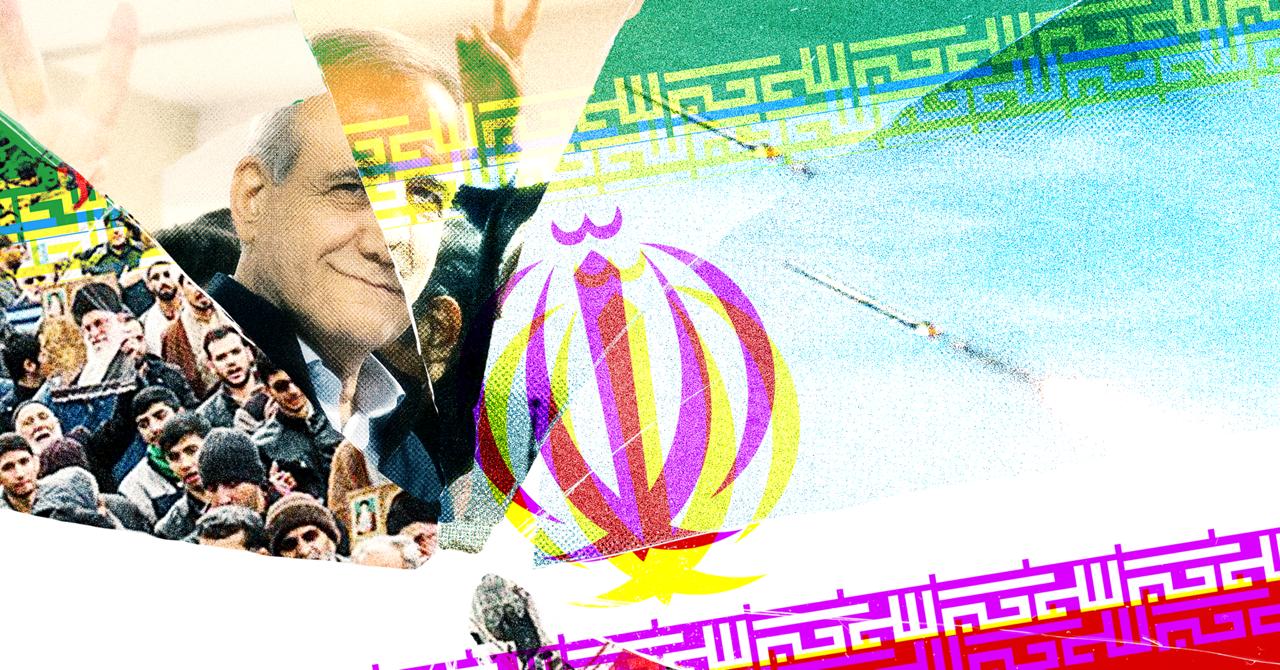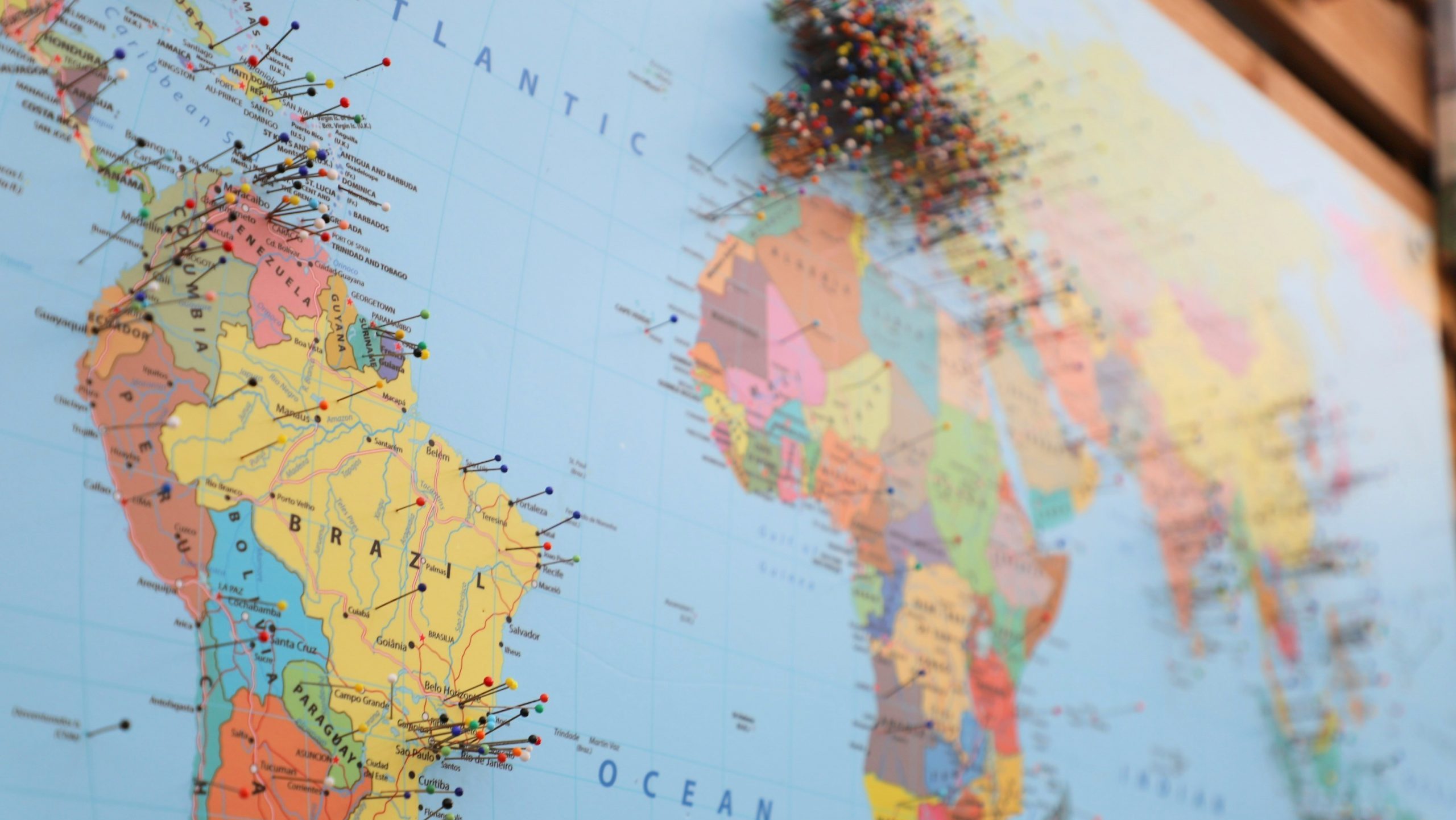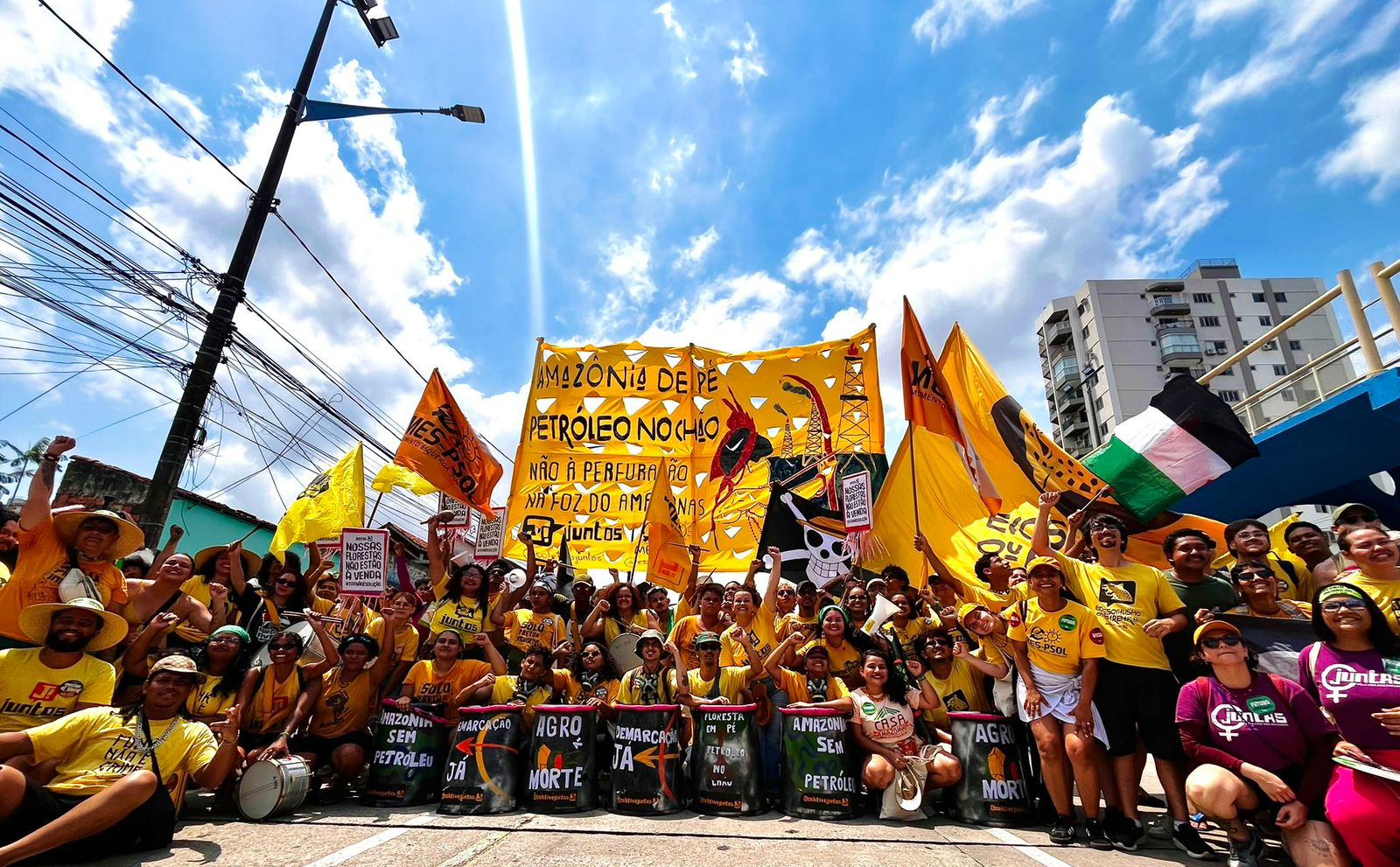The genocidal war in Gaza and the subsequent tensions across the Middle East over the last ten months have put the tumultuous and tragic political landscape of the Middle East at the top of global news once again. Besides the depth of the humanitarian tragedy in Palestine, the recent war has revealed the power, coordination, and determination of the political forces that are fighting against Israel. This is the first conflict between Israel and the Palestinians in the last fifty years in which Israel has had to fight with multiple foes simultaneously: with Hamas in Gaza, with Hezbollah in the north and with Houthis, Iran, and other groups on other fronts farther from their borders.
It seems like Israel is facing a new reality: they no longer face isolated adversaries. Their enemies have joined forces and are working in concert with each other. This bitter change in the balance of power in the Middle East was acknowledged by Israeli officials months before the attacks of October 7th. In April 2023, an Israeli attack in Syria was retaliated against by counterattacks from Syria, Lebanon, and Iraq. Yoav Gallant, the Israeli Defense Minister, warned Israelis that “the era of limited conflicts” is over. He urged Israelis to see “the new security era,” in which they have to expect threats from Gaza, the West Bank, Syria, Lebanon, and Iran. The course of the war in Gaza has proven Gallant’s concerns to be valid and prescent.
The so-called “Axis of Resistance,” the name that the members of this alliance have chosen for their political union, has been formed over the last twenty years in the Middle East, in the aftermath of the Iraq war and the occupation of that country by American forces. Iran is by far the most powerful actor in this alliance — to the extent that most commentators in the West view other members of this alliance as Iran’s proxies. This characterization is not entirely accurate since each member of this alliance has some degree of autonomy in their actions. Nevertheless, there is no doubt that Iran is the central and crucial piece in this union.
Since the revolution of 1979, which led to the overthrow of the Western-backed monarchy in Iran and the formation of the Islamic Republic, Iran has challenged American hegemony in the region. In the 1980s and 1990s, this challenge was primarily defensive. It wasn’t until the 2000s that Iran became powerful enough to exert significant influence in the region. The turning point for Iran was the invasion of Iraq by the United States. This disastrous war not only failed to achieve any of its objectives but also eliminated Iran’s archenemy, Saddam Hussein. Soon after the invasion of Iraq, Iranian forces took advantage of the power vacuum created in Iraq and mobilized Shia militias; Shias in Iraq had been oppressed for decades by the Sunni ruling elite. The culmination of old grievances with new ones, arising from the reality of American imperialist presence in the country and, more broadly, in the region, made the anti-American and religious ideology of the Iranian regime attractive to many Iraqis. The Bush administration paved the way for Iranians to build a strong base in Iraq and connect Iran, Iraq, Syria, and Lebanon by land, enabling the movement of personnel, fighters, and military equipment across this vast territory.
General Qassem Soleimani, the commander of the Quds Force, was the architect of this network and soon became the number one enemy of the United States and Israel. He later helped incorporate the Houthis in Yemen and Afghan militias into this alliance. The power of the “Axis of Resistance” has been on the rise, partly due to their unique capacity to mobilize people in war-torn regions and partly due to their ability to coordinate and cooperate with each other.
This new reality in the Middle East is gradually and reluctantly being recognized by all sides. Every American administration has tried to contain Iran and its allies, and they have all failed. The Israelis witness the growing power of their enemy hysterically and desperately urge Americans and other regional players to push Iran back. Saudi Arabia and other Gulf states, which were fighting against Iran in Syria and Yemen, have finally conceded and, with the mediation of the Chinese, they have sought rapprochement with Iran. No doubt, the future is undetermined, and the outcome of the fight between the US and Israel and Iran and its allies is yet to be seen. Still, the shift in the balance of power toward Iran’s alliance is increasingly acknowledged by commentators and actors from all sides.
How does this reality affect the political and moral stance of the left regarding the political situation in the Middle East and, more broadly, the ongoing and so far successful pushback against American imperialism when it is not and will not be carried out by any progressive forces but by Islamists?
These are vexed questions which are matters of debate and contestation on the left. To be sure, these questions are not new. Over the course of the twentieth century, the left, particularly in the Global South, was puzzled by the question of “the national bourgeoisie” — bourgeois forces that were involved in (if not the leaders of) anti-colonial movements. This hard question is coming to the surface again. This time, it is more puzzling, since the anti-imperialist forces in the Middle East are not even committed to the most general liberal and secular values that the left cherishes.
This longstanding bafflement arises from a conception of the essence of anti-colonial and anti-imperialist movements within the Marxist tradition, which necessitates revisiting. Sympathy, support, and solidarity for anti-colonial movements on the left date back to the early days of the socialist movement in Europe in the nineteenth century. However, the victory of the Russian Revolution and the dominance of Leninism within the left made the fight against imperialism not only an indispensable part of the fight against capitalism but also indistinguishable from it. Lenin argued that imperialism is the natural extension of capitalism on the global stage, and thus, that anti-imperialist struggles would necessarily weaken global capitalism. The surge of the anti-colonial movement in the Global South in the twentieth century made this view more attractive to the masses who were suffering from various forms of exploitation and colonial dominance at the same time.
A critique of Lenin’s theory of imperialism is beyond the scope of this article. But the outcomes of decades of anti-colonial movements in the last century can help us gauge this view empirically. There is no doubt that socialists, communists, and left-leaning nationalists were leaders of the anti-colonial movements during most of this period, and that they were successful in many of these struggles. Yet, this success was never matched by subsequent success in the fight against capitalism. In Russia, China, Cuba, and Vietnam, communists gained power, but any honest observer would admit that in none of these cases could the outcome be described as a functional and democratic socialism. In other cases, such as South Africa, India, and Egypt, left-leaning nationalists or social democrats took power, but in all of these cases, the egalitarian character of the ruling governments did not withstand the neoliberal turn.
Furthermore, and perhaps more relevant to this article, by the end of the past century, the leftists and secular forces were losing their hegemony over anti-colonial movements. In the Middle East, this demise was the most apparent. The Iranian revolution of 1979 toppled the monarchy, which was put in power by Americans and the British. The revolution was carried out by a coalition of diverse political forces: Communist guerillas, Islamic socialists, Islamists, and nationalists. Anti-imperialism was the central theme of the revolutionary discourse, and soon, Islamists realized that to win over the masses, they had to demonstrate anti-American militancy. Taking over the American embassy and holding American diplomats hostage was the bold and risky move that secured their hegemony over the revolutionary masses. Soon, the war with Iraq started. The Iranian regime was rightly convinced that the Americans were supporting Saddam Hussein and used the war to safeguard their rule by rallying people around the flag and, at the same time, executing a bloody campaign of suppression of the left.
The new Islamist force also had an eye on the Palestinian struggle. They helped with the formation of Hezbollah during the Lebanese Civil War. By the late 1980s, the war in Lebanon had eroded the base of the secular Palestinian Liberation Organization (PLO), which eventually compelled them to negotiate with Israel and accept unfavorable and humiliating terms. While many Palestinians saw this compromise as a betrayal of their cause, the life of Palestinians under occupation did not get any better and it soon became apparent that the Oslo Accords would never deliver a Palestinian state or any other political settlement that could guarantee a safe and dignified life for Palestinians. This disillusionment with the PLO paved the way for the newly formed Islamist groups, most notably Hamas.
While this new anti-imperialist force opposes the Americans and Israelis in the region, their domestic records offer little, if anything, that progressives would view favorably. This is much more visible in Iran since paramilitary groups that don’t control the state in other countries have little capacity to implement social or economic policies. But unlike Hezbollah and Hamas, the Iranian Islamists are governing a country with 80 million inhabitants and a large and modern capitalistic economy. The Islamic Republic’s populist era came to an end soon after the war in 1988. Following the global shift to neoliberalism, the “era of reconstruction” promised after the war was accompanied by the familiar neoliberal prescription that most of the globe adopted.
The four presidents who ruled Iranian administrations from 1989 to 2021 had strong disagreements on foreign policy and social and political issues, but they had little disagreement in their neoliberal economic policy. The most aggressive wave of privatization and curbing social subsidies occurred under the Ahmadinejad administration (2005-2013), the same president who had close personal relationships with Hugo Chavez and who was championed by many leftists in the West as an Islamic version of a Chavez-type socialist.
Not only has the anti-imperialist campaign of the Iranian regime not resulted in any egalitarian domestic policy, but in many cases, it has tilted the balance of power towards the ruling classes.
In early 2010, the dispute between Iran and the West over Iran’s nuclear program intensified, and consequently, the Obama administration imposed harsh economic sanctions against Iran, which crippled its economy. In response, Iran compromised and agreed to negotiate. The result was a deal that gave Iran sanctions relief in exchange for curbing its nuclear plan. The deal was a success for the pro-Western faction of the Iranian political establishment, which had the executive power at the time. But this short honeymoon came to an end when Trump took power in the US. Although the International Atomic Energy Agency’s reports showed Iran’s full compliance with the terms of the deal, Trump decided to leave the deal unilaterally and reimpose sanctions on Iran.
This shift had enormous consequences in Iranian domestic politics. It proved anti-American hardliners’ stance — which is the stance of the Supreme leader of the country, too — to be correct: Americans cannot be trusted, and Iran has no choice but to stand up to their imperialist bully. (In Iran, the president holds the second highest position of power; The top authority is the Supreme Leader, who is elected by a council of clerics and has been governing the country for over thirty years.) They concluded that the only solution for them is not to put their hopes in negotiations but to show that sanctions would not be effective. The Supreme Leader publicly declared that Iran needs a “resistance economy” to make sanctions ineffective.
What he meant by a resistance economy was not clear, but very soon, it became evident who would carry the burden of resistance to imperialism. The sanctions crippled the Iranian economy, partly because years of aggressive privatization had created an economic elite that could control the market for foreign currencies. Soon after Trump left the nuclear deal in May 2018, and even before the official reimposition of sanctions, they managed to transform their wealth into dollars and took them to Canada, Europe, Turkey, the UAE, and everywhere else they could. The national currency lost about sixty percent of its value in a matter of months, and domestic production collapsed. In November 2018, to compensate for the budget deficit that was created, the administration increased the gas price three times overnight. A move that would undoubtedly incite unrest even in the most prosperous economies. The result was riots in poor and working-class urban areas across the country. The government shut down the internet for a week and opened fire on rioters. The actual number of casualties is unknown, but it is estimated that at least 300 people were killed in that week.
The massive suppression, which compared to middle-class-led unrests in Iran, received no coverage or attention in Western media, had a clear message for the American administration: sanctions will not change our policies. We may face an economic crisis, but we can manage it by suppressing our population. We will force our poorest to live poorer but will never yield to American dictates.
The ruthless tone of this message should have a chilling effect on any moral person. It should also show the class orientation of the Iranian elites to anyone who has egalitarian concerns. However, while socialists should see the domestic reality of Iran and not fall into the trap of romanticizing anti-American political forces, they should not let the orthodox view about the relation between capitalism and imperialism cloud their judgment about the reality of anti-imperialist struggles. A thought experiment can further illustrate this point. If we were observers of world affairs in the middle of the Second World War, we would have been content with the news of the victories of the Allies. But that happiness would not mislead us about the brutal nature of Stalin’s regime or the war crimes that the Allies were committing in the midst of liberating Europe from Nazism. The same logic should be applied to the Middle East and anywhere else where imperialism has a foothold. The left paid a grave price for conflating these two phenomena in the twentieth century. It is up to us to learn lessons from history and avoid repeating those mistakes.




